Photographing the fireworks.

Fireworks have always been a favourite subject for photographers. Firstly, because they are relatively rare events: you have to wait for the national or local celebrations, which gives them the appeal of an event. Secondly, because this type of photo raises particular technical difficulties. Nevertheless, if you prepare well in advance, you can take superb photos of fireworks without too much difficulty.
Choosing the right location.
This stage is likely to be the most delicate and the most decisive for getting the best photos. It's essential that you choose your spot beforehand: once the fireworks have started, it will be too late to change location.
Ideally, of course, you'll have a window overlooking the fireworks: in that case you'll be able to sit quietly and won't be disturbed for the duration of the show and you won't be disturbed for the duration of the show.
If, like many people, you don't have this privilege, here are a few tips that may help:
Choose a location that is higher up.
You are less likely to be obstructed by a foreground: trees, roofs of houses, etc.
Choose a location that won't be overrun by crowds.
You won't be able to work properly if you're jostled or if you get in the way of the audience. Even if you are seated before everyone else, some people will not hesitate to push you or ask you to move.
Choose a location away from where the fireworks will be fired.
Fireworks always explode higher than you think. So don't be afraid to choose a spot that's a long way from where the fireworks are going off, so that you can stand back and get a wide shot. It's also a good idea to include some landscape or reflections in the water in the frame (fireworks are often shot over water).
The equipment.
The tripod.
A tripod is essential, especially if you want to incorporate some scenery into the image. You will be working with fairly long exposures (several seconds).
A remote control.
The remote control is always recommended with a tripod, so that you don't have to touch the camera while you're shooting. However, it is not essential.
Note: if you don't have a remote control, you can try using the self-timer. The idea is not to touch the camera while it's taking the picture. With the self-timer, you press down, let go and the photo is taken one or two seconds later. The trouble is that, because of this delay, you'll find it more difficult to master THE right moment.
The lens.
Opt for a short focal length to get a wide enough angle of view. Since it is difficult to define the framing exactly, a zoom lens can be useful for rectifying the framing quickly after the fire has started.
How to proceed ?
Photos of fireworks against a black sky.
- Position your tripod and adjust your framing according to where you think the fires are going to explode. Don't hesitate to frame wide: it will always be possible to crop the photo in post-processing.
- Deactivate auto-focus. In any case, auto-focus won't work on a background as dark and even as a night sky. Focusing will therefore be done manually: set to infinity or slightly closer (hyperfocal distance).
- Set the exposure to "Manual". Choose a relatively small aperture (F/8 for example) to ensure sufficient depth of field.
- Set the exposure time to 2 seconds. You'll need to do a few tests to fine-tune this time. You can also use the "Bulb" mode. In this mode, the shutter remains open as long as you hold your finger on the shutter release button or on the remote control (in this mode, the remote control is highly recommended).
- Set the sensitivity to a low value: 100 or 200 ISO. Although all this is happening at night, the lights will be intense.
- Wait for a rocket to be launched and press the shutter release.

As it is not easy to know where the explosions will occur, the composition of this type of photo is rather random.
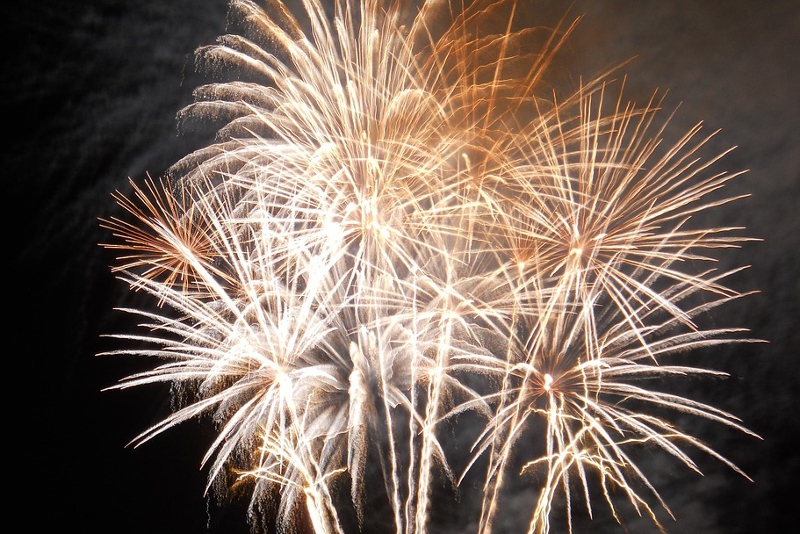
The framing here is a little tight. As mentioned above, the height and scale of the explosions often take us by surprise.
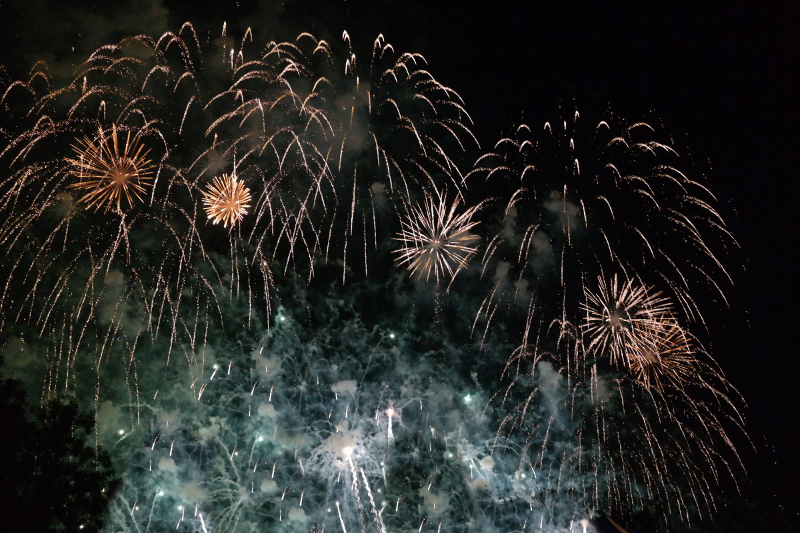
The final bouquet is often an interesting moment to photograph, always rich in colour and light, but be careful, don't hesitate to frame very wide, even if it means recropping in post-processing.
Photos of fireworks with scenery.
By introducing a landscape or monument into the composition of the photo, you will have more creative possibilities (see examples below). What's more, a well-known monument situates the photo in a particular place: the Eiffel Tower, for example, indicates that it's a firework display over Paris.
The method is much the same as for fireworks against a dark sky, but you'll need to adjust the exposure to suit the setting. If it's a landscape, the horizon line should be clearly visible. If it is a lit monument, it must be correctly exposed. Fortunately, this exposure adjustment can be done quietly before the fire starts.
The little tricks.
Since you're using a tripod, and since the background is essentially black, it will be easy to superimpose several photos in post-processing, either to merge several explosions into a single image, or to assemble a photo with the backdrop correctly exposed with another image exposed for the fireworks.

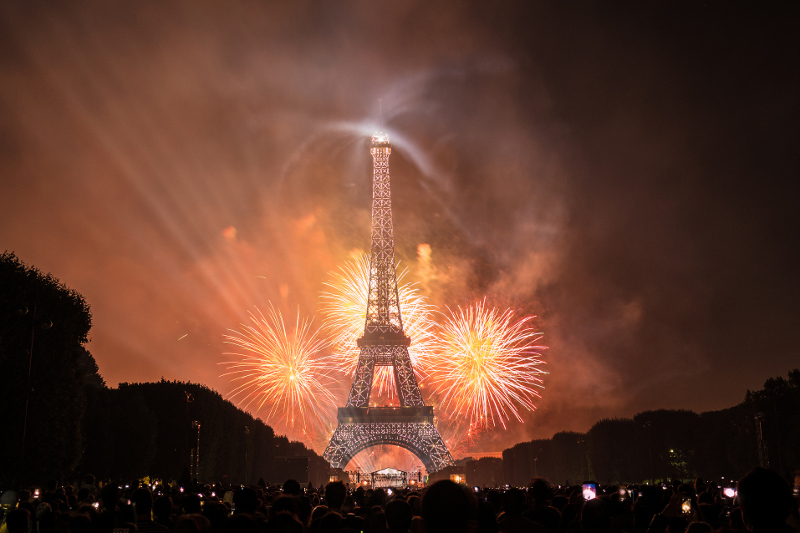
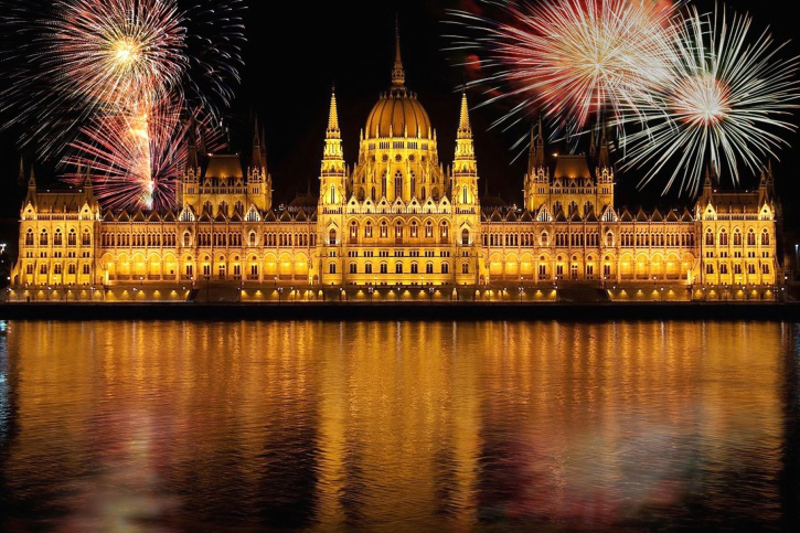
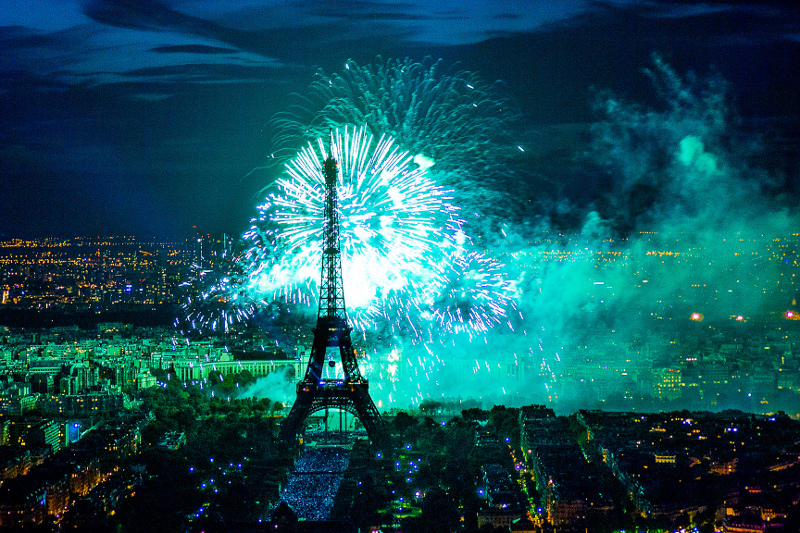

If you liked this page, share it on your favorite network :